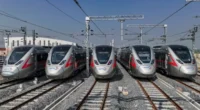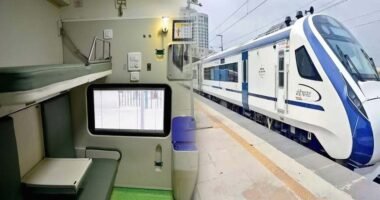The Indian state of Madhya Pradesh is set to experience a paradigm shift in its railway infrastructure with the allocation of an impressive Rs 14,700 crore by the central government. This infusion of funds marks a new chapter in rail development and is expected to bolster the state’s connectivity, economic progress, and overall ease of transportation. Unveiled by the Minister of Railways, Ashwini Vaishnaw, this initiative underscores the government’s commitment to revitalize the rail network in Madhya Pradesh, bringing with it numerous benefits and opportunities for both residents and industries.
Significance of the Allocation
The allocation of such a substantial budget cannot be understated. Here’s why this decision is monumental for Madhya Pradesh:
- Enhanced Connectivity: Improved rail connections will reduce travel time and increase accessibility to remote areas, fostering socioeconomic development across the state.
- Economic Growth: With better transport infrastructure, local businesses will find it easier to connect with national and international markets, boosting trade and commerce.
- Job Creation: Infrastructure development is a labor-intensive process that will create numerous job opportunities, helping reduce unemployment in the region.
- Tourism Development: Enhanced rail connectivity makes it convenient for tourists to explore the historical and cultural sites of Madhya Pradesh, promoting tourism and cultural exchange.
Key Areas of Focus
The allocation is strategically aimed at enhancing various aspects of rail infrastructure:
Modernization of Railway Stations
The project includes modernizing a number of railway stations to meet contemporary standards. Improvements will range from upgraded waiting areas to enhanced digital interfaces that will make the traveler’s experience more seamless and pleasant.
Expansion of Rail Network
Expanding the rail network is a pivotal component of this plan. By constructing new lines and doubling existing ones, the initiative aims to eliminate bottlenecks, ensuring smoother and more reliable rail services across the state.
Introduction of New Technologies
The integration of cutting-edge technology such as AI-driven traffic management systems and energy-efficient trains is anticipated to pave the way for a smarter, more sustainable rail network.
Safety and Security Enhancements
An integral part of this project focuses on improving safety measures. From better surveillance systems at stations to upgrading tracks and signaling systems, the initiative safeguards both passengers and goods.
Potential Challenges
While the potential benefits of this initiative are extensive, certain challenges need to be acknowledged:
- Environmental Concerns: Rail expansion can lead to deforestation and habitat disruption, raising ecological considerations.
- Land Acquisition: Securing land for new rail lines presents logistical and legal challenges that need to be strategically managed.
- Coordination Across Agencies: Ensuring collaboration among various government departments and private stakeholders is crucial for timed and successful project execution.
The Road Ahead
The path toward achieving the projected outcomes will require meticulous planning and execution. Below are potential steps to optimize the delivery of this initiative:
- Public Consultations: Engage with local communities for feedback and to share benefits, ensuring public support and awareness.
- Sustainable Practices: Implement eco-friendly measures that minimize environmental impact, aligning development with conservation goals.
- Transparent Monitoring: Establish an accountable system to track progress, addressing bottlenecks or issues promptly.
Conclusion
The Rs 14,700 crore allocation for rail development earmarks a transformative period for Madhya Pradesh. Expected to yield dividends in connectivity, job creation, and economic growth, these forward-looking initiatives will bring significant changes to the state’s landscape. However, careful management, community engagement, and detailed planning remain essential to overcome potential challenges and ensure the fullest realization of this vision for Madhya Pradesh’s rail infrastructure enhancement.
“`






